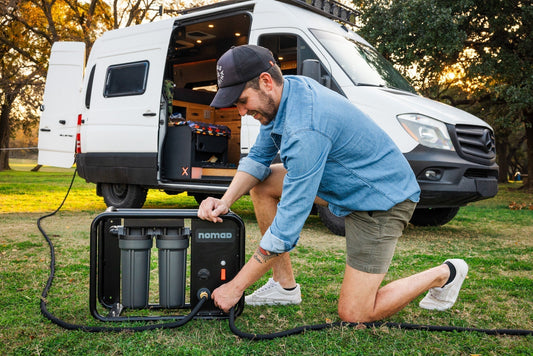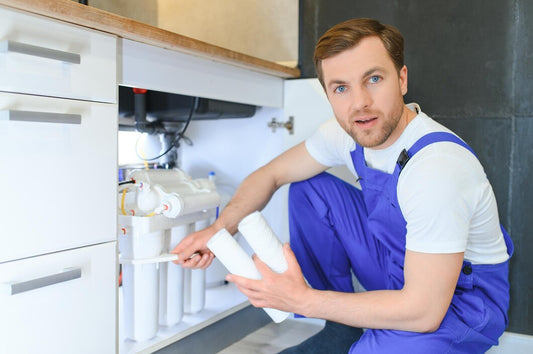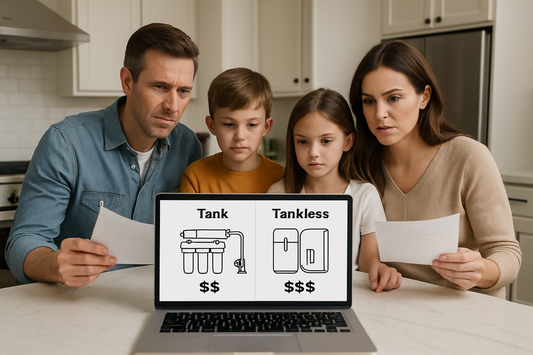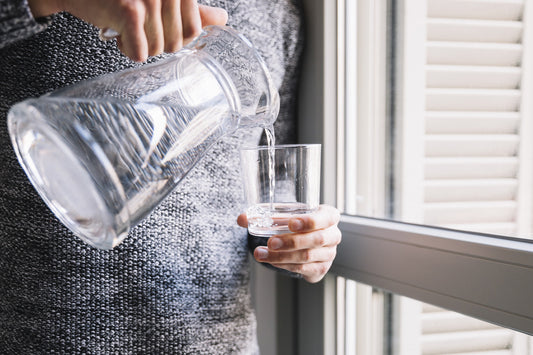Water filter cost savings extend far beyond the sticker price. While the average American family spends $1,200 annually on bottled water, a quality home water filter system pays for itself within 3-6 months. Understanding these economics helps you make smarter decisions about your family's health and budget.
The Real Cost of Bottled Water vs Home Filtration
Family of Four Annual Comparison:
- Bottled water: $1,200-$1,800 per year
- Home water filter system: $150-$400 initial cost + $50-$150 yearly maintenance
- Annual savings: $847-$1,398
This calculation assumes moderate consumption of 2-3 bottles per person daily. Heavy bottled water users can save even more by switching to filtered tap water.

Image by EyeEm
How Much Does Water Filter Cost? Breaking Down the Investment
The best water filter for home use varies by budget and needs, but here's what you can expect:
Initial Investment Ranges:
- Crystal Quest residential systems: $150-$500 (plus $50-$120/year in replacement filters)
- Blu Tech RV/portable systems: $300-$600 (plus $60-$150/year in filter replacements)
- ClearSource RV filtration: $200-$400 (plus $40-$100/year maintenance)
- Crystal Quest whole-house systems: $400-$1,200 (plus $80-$200/year maintenance)
Why Water Filter Cost Savings Go Beyond Money
Health Cost Avoidance: Filtered water removes chlorine, lead, and other contaminants that can cause long-term health issues. Medical bills from waterborne illness or chemical exposure far exceed filter costs.
Environmental Impact Reduction: Each household filter eliminates approximately 2,000 plastic bottles annually from landfills and oceans.
Convenience Value: No more heavy bottle carrying, storage space issues, or running out of clean water unexpectedly.
Calculating Your Personal Water Filter Savings
Step 1: Track Current Spending
- Count bottles consumed weekly × 52 weeks
- Add delivery fees, gas for store trips
- Factor in time costs for shopping/storage
Step 2: Compare Filter Options Use this formula: (Annual bottled water cost) - (Filter cost + yearly maintenance) = Your savings
Step 3: Consider Usage Patterns Large families, frequent entertainers, and home-based workers typically see higher savings percentages.
Best Water Filter for Home: Matching Systems to Savings
For Maximum Cost Savings: Crystal Quest residential systems ($150-$500) offer excellent value with easy installation and eco-conscious designs. They're perfect for homeowners wanting immediate results with comprehensive filtration.
For Best Long-Term Value: Crystal Quest whole-house systems ($400-$1,200) balance initial investment with long-term savings while protecting all water sources in your home. Most systems last 5-10 years with proper maintenance.
For RV and Portable Use: Blu Tech ($300-$600) and ClearSource ($200-$400) systems are engineered specifically for RV life, off-grid living, and outdoor adventures with 0.2-micron filtration and high-flow designs.
Hidden Costs That Affect Your Water Filter Economics
Replacement Schedule Impact: Crystal Quest residential filters ($50-$120 replacements) typically need changing every 6-12 months, while Blu Tech RV systems ($60-$150) use 0.2-micron filters designed for high-flow applications. Overdue changes reduce effectiveness and increase long-term costs.
Water Quality Variables: Hard water, high sediment levels, or chemical contamination may require more frequent maintenance, affecting your cost calculations.
Energy Considerations: Some systems use electricity for pumps or UV sterilization. Factor $20-$50 annually for powered systems.
Maintenance Tips That Maximize Your Investment
Proper Filter Timing: Replace cartridges according to manufacturer guidelines—not just when taste changes. Early replacement prevents system strain and maintains savings.
Simple Cleaning Routine: Monthly cleaning of housings and annual system inspections prevent costly repairs and extend equipment life.
Water Testing: Annual testing confirms your system works effectively and helps time maintenance for optimal performance.

Making the Switch: Implementation Strategy
Phase 1: Start with a Crystal Quest residential system ($150-$300) for immediate home savings, or choose Blu Tech/ClearSource ($200-$400) for RV and portable needs—both offer professional results without complex installation.
Phase 2: Install your chosen system during a high-usage period to maximize early savings impact—Crystal Quest systems are designed for easy DIY installation.
Phase 3: Track monthly savings to confirm ROI and adjust usage patterns for optimal benefit—most customers see payback within 3-6 months with proper system sizing.
FAQ Section (People Also Ask Format)
Is it cheaper to buy bottled water or a filter?
Water filters are significantly cheaper long-term. A $200 filter system saves the average family $800+ annually compared to bottled water costs, paying for itself within 3-4 months.
How often should I replace my water filter to maintain savings?
Replace filters according to manufacturer schedules—typically every 3-6 months for maximum effectiveness. Delayed replacement reduces filtration quality and can increase long-term costs through system damage.
What's the best water filter for home cost savings?
Crystal Quest residential systems ($150-$500) offer the best balance of upfront cost and long-term savings for most families. They feature eco-conscious designs, easy installation, and comprehensive customer support while lasting 5-10 years with proper maintenance.
Do water filters really save money over time?
Yes, significantly. Most home water filter systems pay for themselves within 6 months through eliminated bottled water purchases, then continue generating savings for years while providing better-tasting, safer water.





